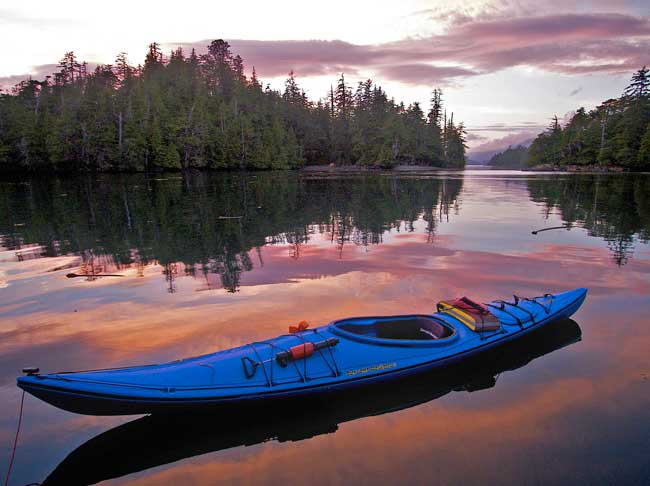

With the silent agility of a sea otter, our sea kayaks slide onto the beach of this small Canadian island in British Columbia. We eagerly disembark, walking west on the only path from our sheltered cove towards the open sea. Suddenly, the forest opens up into another cove hidden from the sea like a pearl inside an oyster. It is the perfect cove, every detail sharpened by a deep blue sky.
We are not alone here. The spirits of killer whales, ravens, eagles, beavers, bears and frogs surround us. Their images have been captured in time, carved into 25-foot high totem poles. These fallen and decaying totems are the remains of the Haida people who once prospered in these forests.
The totems in the forest are remnants of that honored past, and we are hushed. It’s like being in a cathedral, a sacred place. We walk among ghosts here at Ninstints, now a UNESCO World Heritage Site. More than two centuries ago, Ninstints was a busy village on Anthony Island, one of over 150 islands in the Queen Charlotte Islands off the northern coast of British Columbia.
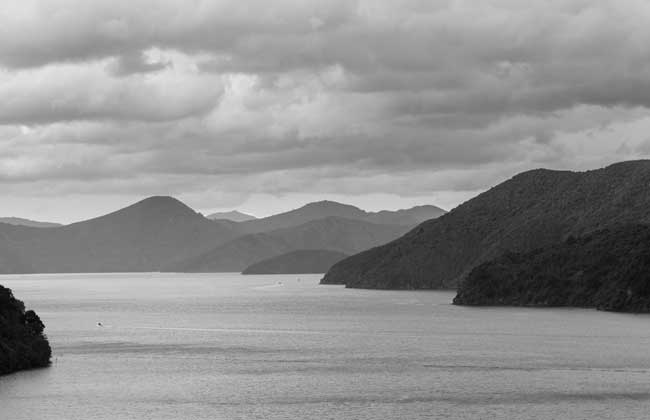
The islands are 50 miles from the Canadian mainland, 40 miles from Alaska. There is no smooth land here; it’s all mountains, forests and water. The beaches are rough, rocky landscapes of pebbles, driftwood and kelp. Raven feathers stick to the wet rocks that line the beaches.
The seas are rich with salmon, halibut, whales and seals. The mountainous land holds some of the finest surviving stands of ancient cedar, spruce and hemlock. The largest of the black bears live here, as well as the largest deer mice.
These dagger-shaped assemblages of islands have more eagle nests per square kilometer than in any other part of Canada. Indeed, eagles are everywhere; in the trees, soaring on the currents, carved on totems.
Some believe that the Charlottes may have been a port-of-entry to North America. There is evidence that the first humans in North America walked through these islands. The islands are biologically isolated, like the well-known Galapagos Islands.
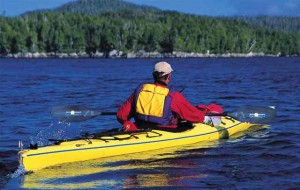
The Queen Charlottes are biologically isolated, much like the Galapagos Islands. They are rich in wildlife and lush vegetation. Sustained by the wealth of the sea and the bounty of the forests, the Haida developed an art and culture that is still compelling and uniquely beautiful. They enjoyed a good life.
In the summers they fished for halibut, salmon and cod, gathered clams, seabird eggs, berries and aquatic plants, and traded with other groups along the coast. In the winters, they had their stories and ceremonies, their art and their legends.
The Haida’s life sounded ideal to me. They lived in beauty, nourished by the sea, with art as much a part of daily life as eating salmon. It seems so rare to find both a culture living in harmony with nature and so gloriously celebrating it in art.
But reaching these ideal islands was no easy task. In order to get here, we had hired a float plane that bumped along the air current and then swooped down to land in a sheltered cove in the southern end of the islands.
Huge swaths of clear-cuts scarred the northern islands. The Haida are still fighting to save the remaining virgin forests. It’s not an easy fight, but it’s a struggle to save the Haida staff-of-life – the giant red cedars.
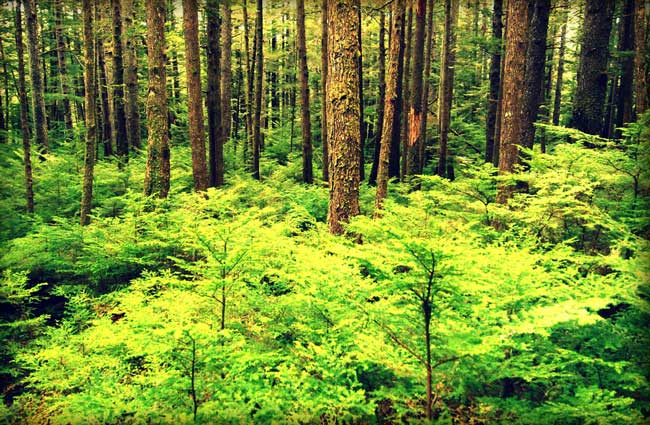
To the Haida, cedars feed the soul. It shelters them as homes and once transported them as sea-worthy canoes. It shelters them as homes and once transported them as sea-worthy canoes.
After the float plane, our mode of transportation was sea craft, two-person sea kayaks. They were easy to use, even for those of us who had never kayaked. Our leaders from Pacific Rim Paddling Company had showed us how to steer, how to wet-exit, and how to kayak through waves. With kayaks, we could stay right near the shore watching the banquet of aquatic plants and sea-life under our boats.
We carried all the supplies we needed for our five-day trip in our kayaks. Summer weather in the Charlottes is mild and rainy most of the time. But winters are harsh. Storms can be fiercer here than anywhere else on the Canadian coast. A sustained wind velocity of 176 km per hour was recorded at Cape St. James on the very southern tip in 1963.
Finding a flat place to set up our tents was a challenge, but sometimes a mossy opening in the trees, just big enough for a tent, revealed itself. Everything was moist, our clothes, gear, skin. Ten steps into the forests, and you could get lost. I had never seen such dense vegetation. Fallen trees sprouted hundreds of seedlings.
Long ago, some of the Haida’s cedar canoes were big enough to carry 40 people and 2 tons of cargo. When the English captain George Dixon sailed his ship the Queen Charlotte into Haida waters in 1787, he was soon surrounded by canoes and men offering sea otter pelts for trade. It was the beginning of the end for the Haida and the otters. With the white man came diseases, and by 1862, smallpox and other diseases wiped out almost 70 percent of the Haida. Gone, too, were the sea otters.
Today, the Haida population has grown to 2,000. Most live in the villages of Skidegate and Masset, where community leaders continue to nurture the culture.
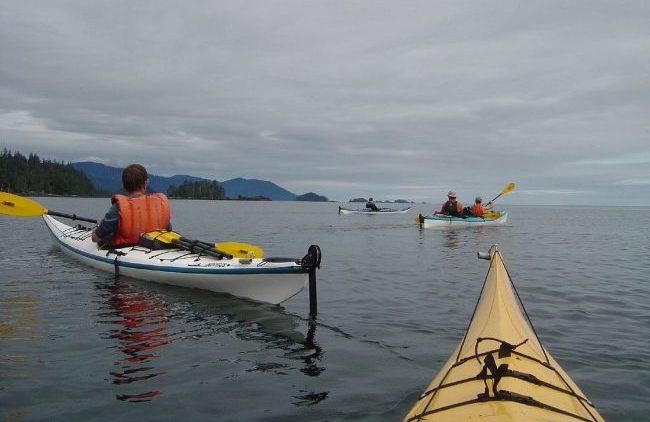
Kayaks and canoes provide the only access to Ninstints. There are no docks, no roads and no landing strips. So here we are now, in sea kayaks, one with the water. The kayak is worn rather than sat in. The movements of the water are felt in the body. It’s more like swimming through, rather than being on, the sea. When a rare Minke whale rises from the ocean near our kayaks, we can feel its wake, like a jolt of electricity.
After hours on the water, I slide my kayak once again onto the land, and then make my way through the trees. I stand next to a crumbling totem pole. I can barely make out a frog and a bear as I walk through this cathedral of sun and cedar, of art and passion. Then something at my feet catches my eye. Mixed in the branches and grass is an eagle feather. Truly this is a holy land.
If You Go
Tourism British Columbia
www.hellobc.com
